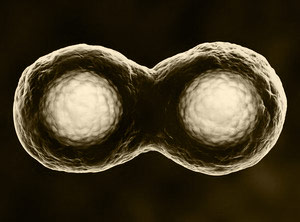THIS ARTICLE IS MORE THAN FIVE YEARS OLD
This article is more than five years old. Autism research — and science in general — is constantly evolving, so older articles may contain information or theories that have been reevaluated since their original publication date.
The past year saw the publication of many groundbreaking papers on autism, making our task of picking just ten a particularly arduous one. Below is a chronological list of just some of the papers, selected by SFARI staff. In his essay, SFARI scientific director Gerald Fischbach describes his thoughts on the list.
1. Study finds high rate of autism in South Korea
The first comprehensive autism study in South Korea found in May that the prevalence of the disorder is more than double the number in the United States.
Kim Y.S. et. al. Am. J. Psychiatry 168, 904-912 (2011) PubMed
2. Family sequencing study boosts two-hit model of autism
Sequencing the entire exome — the protein-coding parts of the genome — of 20 children with autismand their unaffected parents, researchers in May reported four de novo, or spontaneous, mutations in autism-associated genes.
O’Roak B.J. et al. Nat. Genet. 43, 585-589 (2011) PubMed
 3. Networks of genes altered in autism brains, study says
3. Networks of genes altered in autism brains, study says
A May study of gene expression in postmortem brains found that two networks of genes are abnormally expressed in the brains of people with autism.
Voineagu I. et al. Nature 474, 380-384 (2011) PubMed
4. Studies find high rate of rare new mutations in autism
In June, three new studies analyzing genetic data from families in which just one child has autism reported the strongest evidence yet that rare new mutations contribute to the disorder.
Sanders S.J. et al. Neuron 70, 863-885 (2011) PubMed
Levy D. et al. Neuron 70, 886-897 (2011) PubMed
Gilman S.R. et al. Neuron 70, 898-907 (2011) PubMed
 5. Protein networks link different forms of autism, study says
5. Protein networks link different forms of autism, study says
Also in June, researchers identified hundreds of previously unknown connections between proteins involved in autism spectrum disorders.
Sakai Y. et al. Sci. Transl. Med. 3, 86ra49 (2011) PubMed
6. Experts critique statistics, conclusion of autism twin study
A new study of twins, published in July, proposed the controversial claim that environmental influences during early development are just as important as genetics, if not more so.
Hallmayer J. et al. Arch. Gen. Psychiatry 68, 1095-1102 (2011) PubMed
 7. Large study finds ‘baby sibs’ at high risk of autism
7. Large study finds ‘baby sibs’ at high risk of autism
Children who have more than one older sibling with autism have a one in three chance of developing the disorder themselves, according to a study published in August.
Ozonoff S. et al. Pediatrics Epub ahead of print (2011) PubMed
 8. Autism tests struggle to balance accuracy and speed
8. Autism tests struggle to balance accuracy and speed
Whether someone is diagnosed with classic autism, Asperger syndrome or pervasive developmental disorder–not otherwise specified varies significantly among different clinical sites, even when they are all relying on the same diagnostic tests, according to a study published in November.
Lord C. et al. Arch. Gen. Psychiatry Epub ahead of print (2011) PubMed
Tuberous sclerosis, fragile X may be molecular opposites
Some forms of autism are caused by too many proteins at the junction between neurons, whereas other forms result from too few, suggesting that drugs for one form of autism may not help, and may even harm, individuals with another, according to a report in November.
Auerbach B.D. et al. Nature 480, 63-68 (2011) PubMed
 Neurons made from stem cells reveal cellular flaws in autismIn
Neurons made from stem cells reveal cellular flaws in autismIn
December, researchers reported that neurons regenerated from individuals with Timothy syndrome, a rare autism-related disorder, have several cellular abnormalities.
Paşca S.P. et al. Nat. Med. 17, 1657-1662 (2011) PubMed

By joining the discussion, you agree to our privacy policy.